Changes in the Nutritional Composition of Fish Pickle Prepared from Thai Pangus (Pangasianodon hypophthalmus) during Longer Storage at Low Temperature
Article Information
Rahman MA1,2, Hossain MI1, Shikha FH1*
1Department of Fisheries Technology, Bangladesh Agricultural University, Mymensingh, Bangladesh
2WorldFish, Bangladesh and South Asia Office, Dhaka, Bangladesh
*Corresponding Author: Shikha FH, Department of Fisheries Technology, Bangladesh Agricultural University, Mymensingh, Bangladesh
Received: 11 September 2019; Accepted: 26 September 2019; Published: 30 September 2019
Citation: Rahman MA, Hossain MI, Shikha FH. Changes in the Nutritional Composition of Fish Pickle Prepared from Thai Pangus (Pangasianodon hypophthalmus) during Longer Storage at Low Temperature. Journal of Food Science and Nutrition Research 2 (2019): 299-308.
View / Download Pdf Share at FacebookAbstract
Processing and preservation result in nutritional quality changes in fishery products. This study designed to observe quality changes in fish pickle from Thai Pangus (Pangasianodon hypophthalmus) at refrigeration (5°C to 8°C) and freezing (-20°C to -18°C) temperature in kitchen refrigerator. In fish pickle, moisture content (%) decreased from 58.20 ± 0.194 to 48.53 ± 0.345 and 58.67 ± 0.180 to 43.90 ± 0.245 at refrigeration and freezing storage, respectively after twelve months of storage. Likewise, protein content (%) decreased from 22.35 ± 0.385 to 18.85 ± 0.097 and 22.70 ± 0.141 to 14.69 ± 0.137, respectively throughout the storage period. Lipid content (%) increased up to five months of storage and then decreased gradually at refrigeration temperature, whereas at frozen temperature it increased gradually at the whole storage period. Ash content (%) increased from 4.08 ± 0.043 to 7.38 ± 0.081 and 4.83 ± 0.130 to 9.18 ± 0.085, respectively in refrigeration and freezer compartment. pH value decreased from 6.83 ± 0.040 to 4.29 ± 0.045 and from 6.79 ± 0.036 to 4.11 ± 0.045, respectively at refrigeration and frozen storage condition. Aerobic plate count (APC) reached to 6.5 × 106 CFU g-1 from 4.4 × 104 CFU g-1 at refrigeration temperature, but at freezing temperature it decreases to 6.8 × 102 CFU g-1 from 3.3 × 104 CFU g-1. This study has immense importance to satisfy consumer’s query relating to nutritional composition and longevity of fish pickle in domestic refrigerator.
Keywords
Aerobic plate count, Fishery products, Proximate composition, Storage
Aerobic plate count articles, Fishery products articles, Proximate composition articles, Storage articles
Aerobic plate count articles Aerobic plate count Research articles Aerobic plate count review articles Aerobic plate count PubMed articles Aerobic plate count PubMed Central articles Aerobic plate count 2023 articles Aerobic plate count 2024 articles Aerobic plate count Scopus articles Aerobic plate count impact factor journals Aerobic plate count Scopus journals Aerobic plate count PubMed journals Aerobic plate count medical journals Aerobic plate count free journals Aerobic plate count best journals Aerobic plate count top journals Aerobic plate count free medical journals Aerobic plate count famous journals Aerobic plate count Google Scholar indexed journals Fishery products articles Fishery products Research articles Fishery products review articles Fishery products PubMed articles Fishery products PubMed Central articles Fishery products 2023 articles Fishery products 2024 articles Fishery products Scopus articles Fishery products impact factor journals Fishery products Scopus journals Fishery products PubMed journals Fishery products medical journals Fishery products free journals Fishery products best journals Fishery products top journals Fishery products free medical journals Fishery products famous journals Fishery products Google Scholar indexed journals Proximate composition articles Proximate composition Research articles Proximate composition review articles Proximate composition PubMed articles Proximate composition PubMed Central articles Proximate composition 2023 articles Proximate composition 2024 articles Proximate composition Scopus articles Proximate composition impact factor journals Proximate composition Scopus journals Proximate composition PubMed journals Proximate composition medical journals Proximate composition free journals Proximate composition best journals Proximate composition top journals Proximate composition free medical journals Proximate composition famous journals Proximate composition Google Scholar indexed journals Storage articles Storage Research articles Storage review articles Storage PubMed articles Storage PubMed Central articles Storage 2023 articles Storage 2024 articles Storage Scopus articles Storage impact factor journals Storage Scopus journals Storage PubMed journals Storage medical journals Storage free journals Storage best journals Storage top journals Storage free medical journals Storage famous journals Storage Google Scholar indexed journals domestic refrigerator articles domestic refrigerator Research articles domestic refrigerator review articles domestic refrigerator PubMed articles domestic refrigerator PubMed Central articles domestic refrigerator 2023 articles domestic refrigerator 2024 articles domestic refrigerator Scopus articles domestic refrigerator impact factor journals domestic refrigerator Scopus journals domestic refrigerator PubMed journals domestic refrigerator medical journals domestic refrigerator free journals domestic refrigerator best journals domestic refrigerator top journals domestic refrigerator free medical journals domestic refrigerator famous journals domestic refrigerator Google Scholar indexed journals nutritional composition articles nutritional composition Research articles nutritional composition review articles nutritional composition PubMed articles nutritional composition PubMed Central articles nutritional composition 2023 articles nutritional composition 2024 articles nutritional composition Scopus articles nutritional composition impact factor journals nutritional composition Scopus journals nutritional composition PubMed journals nutritional composition medical journals nutritional composition free journals nutritional composition best journals nutritional composition top journals nutritional composition free medical journals nutritional composition famous journals nutritional composition Google Scholar indexed journals fishery products articles fishery products Research articles fishery products review articles fishery products PubMed articles fishery products PubMed Central articles fishery products 2023 articles fishery products 2024 articles fishery products Scopus articles fishery products impact factor journals fishery products Scopus journals fishery products PubMed journals fishery products medical journals fishery products free journals fishery products best journals fishery products top journals fishery products free medical journals fishery products famous journals fishery products Google Scholar indexed journals good taste articles good taste Research articles good taste review articles good taste PubMed articles good taste PubMed Central articles good taste 2023 articles good taste 2024 articles good taste Scopus articles good taste impact factor journals good taste Scopus journals good taste PubMed journals good taste medical journals good taste free journals good taste best journals good taste top journals good taste free medical journals good taste famous journals good taste Google Scholar indexed journals pickle articles pickle Research articles pickle review articles pickle PubMed articles pickle PubMed Central articles pickle 2023 articles pickle 2024 articles pickle Scopus articles pickle impact factor journals pickle Scopus journals pickle PubMed journals pickle medical journals pickle free journals pickle best journals pickle top journals pickle free medical journals pickle famous journals pickle Google Scholar indexed journals
Article Details
1. Introduction
1.1 Background information
In recent year’s there is a growing demand for value-added fishery products due to increased urbanization, social and cultural changes [1]. Pickling is a safe and easy method of putting up fish for short term storage. Besides, it has commercial importance in different countries in Asia and Africa [2]. In order to increase profitability development of value added products like fish pickle from low cost fish Thai Pangus (Pangasianodon hypopthalmus) could be a new era to produce and supply for human consumption in Bangladesh. In fact, value-added fishery products would bring immediate benefit to the existing fish processing industries in Bangladesh. In the peak season, the market price of Thai pangus often declines due to abundance of their production. Therefore, it would serve as a source of raw material for fish pickle that may provide a good taste and nutrition to the country and outgoing people at cheaper price. However, there is a lack of literature on the development of pickle from Thai Pangus and on the quality changes in the product during storage. Considering the facts, the present work has been designed to generate information on the changes in biochemical and microbiological composition of fish pickle stored in the kitchen refrigerator. The outcomes of this research will help processors to determine optimum processing and storage conditions for pickle prepared from Thai Pangus in order to supply premium quality product in the market.
2. Materials and Methods
2.1 Sample collection and experimental condition
Live Thai Pangus fishes were collected from Kamal- Ranjit (KR) Market of Bangladesh Agricultural University (BAU), Mymensingh. Total 10 fishes were collected having weight from 1.0 to 1.2 kg. The experiments were carried out in the laboratories of the Department of Fisheries Technology, Faculty of Fisheries, BAU for a period of 12 months from November 2013 to October 2014.
2.2 Sample preparation
2.2.1 Ingredients for fish pickle: Fish pickle was prepared from the fresh fish using following ingredients (Table 1).
2.2.2 Fish pickle preparation: The detail procedure of fish pickle preparation in the laboratory is presented in Figure 1 and Figure 2.
|
Ingredient name |
Amount |
Ingredient name |
Amount |
|
Fish muscle |
500 g |
Vinegar |
50 ml |
|
Chili powder |
20 g |
Black pepper |
2 g |
|
Turmeric powder |
2 g |
Pach foron |
5 g |
|
Cumin |
10 g |
Sugar |
50 g |
|
Onion |
20 g |
Salt |
30 g |
|
Garlic |
80 g |
Tomato sauce |
30 g |
|
Ginger |
10 g |
Tamarind |
20 g |
|
Cloves |
2 g |
Sodium benzoate |
1 g |
|
Mustard oil |
150 ml |
- |
- |
Table 1: Standard recipe for fish pickle preparation.
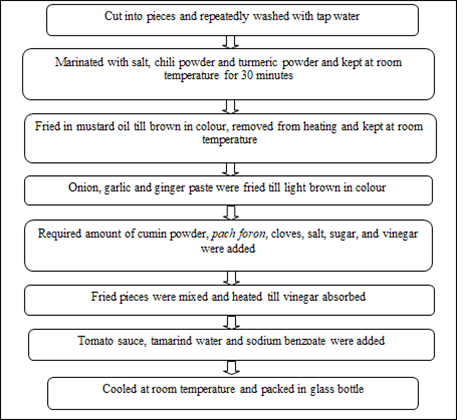
Figure 1: Flow diagram of fish pickle preparation.
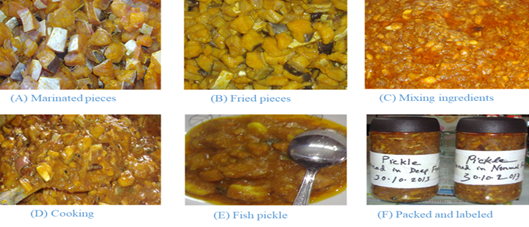
Figure 2: Step by step fish pickle presentation.
2.3 Sample storage
Fish pickle was packed in glass bottles in refrigeration compartment and freezer compartment in the refrigerator. At the refrigeration compartment, storage temperature varied between 5°C and 8°C whereas at freezer compartment the temperature varied from -20°C to -18°C.
2.4 Proximate composition analysis
Monthly analysis of the samples was done. Triplicate samples were taken to carry out the experiment. Proximate composition (moisture, protein, lipid and ash) of fish pickle was tested according to the standard methods described by the Association of Official Analytical Chemists [3].
2.5 Determination of pH value
pH was measured at room temperature using an electronic pH meter (HANNA pH 211 Microprocessor pH Meter) with a glass electrode using expandable scale.
2.6 Determination of APC
The colonies units (CFU) were counted under a Quebec dark field colony counter (Leica, Buffalo, NY, USA) equipped with a guide plate ruled in square centimeters. Plates containing 30-300 colonies were used to calculate the bacterial load using following formula:

2.7 Statistical analysis
Data from different biochemical measurements were subjected to statistical analysis. Microsoft Excel Package 2010 was used to calculate mean, standard deviation of the values and relevant graphs preparation.
3. Results and Discussion
3.1 Proximate composition of fresh fish
Immediately after collection of the sample, proximate composition of the fresh fish was determined in the laboratory (Table 2).
3.2 Quality changes of refrigerated fish pickle
3.2.1 Moisture content (%): Moisture content (%) of fish pickle stored in refrigeration and frozen temperature decreased with the increase of storage period (Figure 3). Studies reported reduced moisture content in fresh fish immediately after frying and cooking [4-8]. According to Ninan et al. [9] the reduction in moisture content is due to deep frying and dehydration during freezing storage of the test samples.
3.2.2 Protein content (%): Like moisture, protein content in fish pickle decreased slowly with the increase of storage period during storage at refrigeration and frozen compartment (Figure 4). Water losses occurring during frying resulted in higher protein content in fried fish as compared to the raw fish fillets reported by Garcia-Arias et al. [10]. Moreover, it was reported that the protein content in fish and fishery products decrease during storage due to the denaturation of fish protein and leaching out of extractable water soluble protein fraction [11-14].
3.2.3 Lipid content (%)
Unlike moisture and protein, lipid content increased during the study period, but after five months of storage it decreased in a refrigerated pickle (Figure 5). Lipid content of fish pickle was higher than fresh fish because of absorption of oil during deep frying and the addition of high quantity mustard oil [15-16]. The findings of the present study and literature data indicating that the frying produced a higher water loss and lipid gain mainly due to the absorption of fat by fish muscle [6, 17-19].
3.2.4 Ash content (%)
In refrigeration and frozen storage condition ash content in fish pickle increased with the increase of storage period (Figure 6). Present study recorded high level of ash content in fish pickle immediately after processing than the fresh fish. This is due to moisture loss in the processed fish pickle during frying and cooking [17]. Present findings revealed that ash content in fish pickle stored in refrigeration and frozen temperature increased gradually throughout the storage period. This character of ash is related to reduction in moisture content during storage [20]. The study also identified an inverse relation between moisture content and ash content of the pickle.
3.2.5 pH value
Fish pickle was found near neutral pH value after preparation that is in the 1st month of storage (Figure 7). Erkan et al. [21] recommended pH level of 6.8 to 7.0 as the limit of acceptability for fishery products. pH of fish pickle stored under refrigeration and frozen storage was within the range. In the present study, the decrease in the pH might be due to the addition of vinegar, sodium benzoate and tamarind during processing and its gradual uptake by fish pickle. pH in prawn pickle is reduced significantly by sodium benzoate [22]. Similar decreasing trend in pH during storage of pickle was reported by Tamilselvi et al. [23] and Dhanapal et al. [24]. Tanuja and Hameed [25] recorded the pH of squilla pickle 4.46 which dropped gradually during storage.
3.2.6 Aerobic plate count (APC)
APC means the total bacterial load of the studied sample. In the present study, APC showed an inverse relation at refrigeration and frozen temperature (Table 3).
|
Proximate Composition |
Value (%) |
|
Moisture content |
79.21 ± 1.43 |
|
Protein content |
13.17 ± 0.91 |
|
Lipid content |
4.00 ± 0.45 |
|
Ash content |
1.60 ± 0.24 |
|
Total |
98.00 ± 0.68 |
Table 2: Proximate composition (% in wet weight basis) of fresh Thai Pangus.
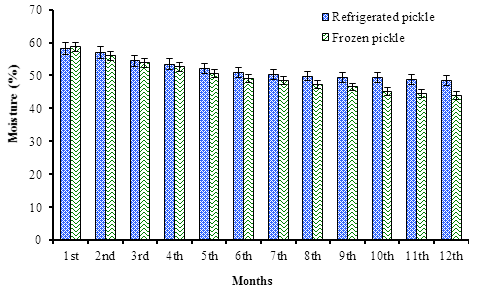
Figure 3: Changes in moisture content (%) of fish pickle.
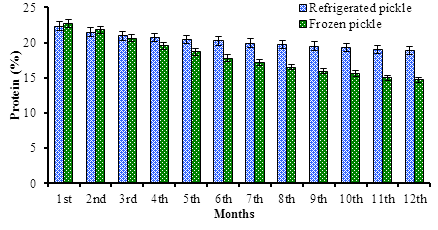
Figure 4: Changes in protein content (%) of fish pickle.
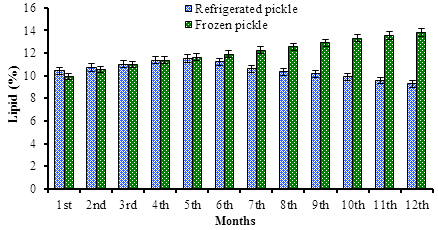
Figure 5: Changes in lipid content (%) of fish pickle.
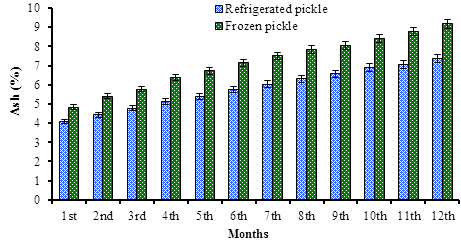
Figure 6: Changes in ash content (%) of fish pickle.
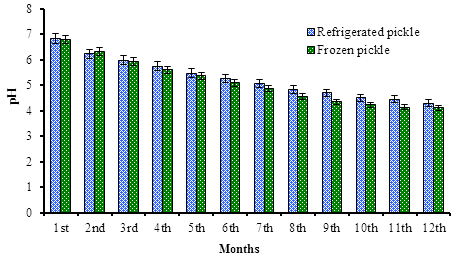
Figure 7: Changes in pH value of fish pickle.
|
Month |
APC of Fish Pickle (CFU g-1) |
|
|
Refrigerated Pickle |
Frozen Pickle |
|
|
1st |
4.4 × 104 |
3.3 × 104 |
|
2nd |
7.1 × 104 |
8.5 × 103 |
|
3rd |
9.1 × 104 |
5.3 × 103 |
|
4th |
2.7 × 105 |
4.2 × 103 |
|
5th |
4.2 × 105 |
3.1 × 103 |
|
6th |
6.6 × 105 |
1.4 × 103 |
|
7th |
7.5 × 105 |
0.9 × 103 |
|
8th |
9.1 × 105 |
9.3 × 102 |
|
9th |
1.5 × 106 |
8.5 × 102 |
|
10th |
2.8 × 106 |
8.1 × 102 |
|
11th |
4.9 × 106 |
7.3 × 102 |
|
12th |
6.5 × 106 |
6.8 × 102 |
Table 3: APC of fish pickle at refrigeration and frozen storage.
Mukundan et al. [26] reported that pickle contains very low bacteria counts due to the inhibitory action of low pH and high salt content of the pickles. Chandrasekar [27] reported total plate count in fish pickle within the range of 103 to 105 CFU g-1. These are similar to the present study. Bacterial load in fish pickle was within the permissible limit of 107 [28]. In the present study, APC has increased in fish pickle stored at refrigeration temperature. This is due to that refrigeration slow down bacterial action and multiplication but can’t stop. Total bacterial count showed a gradual reduction during storage of fish pickle under frozen temperature, which is similar to the finding of Tanuja and Hameed [25]. In the case of freezing, the idea is to stop bacterial action altogether. That is why APC decreased in the present study. Abraham et al. [26] reported that he bacterial population of fish, pickles are salt and acid tolerant. They stated that freezing of fish at -18ºC is unfavorable for the growth and the survival of the microorganisms. Abraham and Setty [22] found significantly reduced bacterial growth by using sodium benzoate (0.1%) in prawn pickle. In liquid medium, the study observed an inhibitory action on the growth of lactic acid bacteria.
4. Conclusions
Fish pickle from low cost and underutilized fish can be a way to meet the nutritional demand of the growing population. There is a greater possibility of exporting fish pickle as a canned product. The present study revealed that scientific knowledge of quality changes in fish pickle during refrigerated and frozen storage will provide a basis for supplying premium quality products in the market. Pickle from Thai Pangus could be a way to food security through supplying value added products. Thai Pangus farmers will get the actual benefit due to processing of diversified value added products. The study recommends carrying out further research on the appropriate packaging of such product for local marketing and for the international markets. Also, as a new product it requires proper advertisement to make it more popular as well as to create local and export market.
Statement of Competing Interests
The authors have no competing interests.
References
- Pagarkar AU, Joshi VR, Baug TE, et al. Value addition is need of seafood industries. Fish Coops 23 (2011): 8-14.
- Sharma PJ, Sarma J. Preparation of pickles from fresh water fish and their changes during storage. Environment and Ecology 30 (2012): 478-480.
- Official methods of analysis. Association of Official Analytical Chemists International (2005).
- Holma KA, Maalekuu BK. Effect of traditional fish processing methods in the proximate composition of red fish stored under ambient room conditions. American Journal of Food and Nutrition 3 (2013): 73-82.
- Stephen NM, Shakila RJ, Jeyasekaran G, et al. Effect of different types of heat processing on chemical changes in tone. Journal of Food Science and Technology 47 (2010): 174-181.
- Weber J, Bochi VC, Ribeiro CP, et al. Effect of different cooking methods on the oxidation, proximate and fatty acid composition of silver catfish (Rhamdia quelen) fillets. Food Chemistry 106 (2008): 140-146.
- Rosa R, Bandarra NM, Nunes ML. Nutritional quality of African catfish Clarias griepinus (Burchell 1822): A positive criterion for the future development of the European production of Siluroidei. International Journal of Food Science and Technology 42 (2007): 342-351.
- Kucukgulmez A, Celik M, Yanar Y, et al. Effects of different cooking methods on the proximate composition and mineral contents of sea bass (Dicentrarchus labrax). Advances in Food Sciences 28 (2006): 223-227.
- Ninan G, Bindu J, Joseph J. Frozen storage studies of minced based products developed from tilapia (Oreochromis mossambicus, Peter 1852). Fishery Technology 45 (2008): 35-42.
- Garcia-Arias MT, Pontes EA, Garcia-Linares MC, et al. Cooking-freezing-reheating (CFR) of sardine (Sardian pilchards) fillets: Effect of different cooking and reheating procedures on the proximate and fatty acid compositions. Food Chemistry 83 (2003): 349-356.
- Arannilewa ST, Salawu SO, Sorungbe AA, et al. Effect of frozen period on the chemical, microbiological and sensory quality of frozen tilapia fish (Sarotherodun gallons). African Journal of Biotechnology 4 (2005): 852-855.
- Daramola JA, Fasakin EA, Adeparusi EO. Changes in physicochemical and sensory characteristics of smoked-dried fish species stored at ambient temperature. African Journal of Food, Agriculture, Nutrition and Development 7 (2007): 1-16.
- Siddique MN, Hasan MJ, Rahman MZ, et al. The effect of freezing time on the nutritional value of Jatpunti (Puntius sophore), Sarpunti (P. Sarana) and Thai sarpunti (P. Gonionotus). Bangladesh Research Publications Journal, 5 (2011): 387-392.
- Gandotra R, Koul M, Gupta S, et al. Change in proximate composition and microbial count by low temperature preservation in fish muscle of Labeo rohita (Ham-Buch). Journal of Pharmacy and Biological Sciences 2 (2012): 13-17.
- Marimuthu K, Thilaga M, Kathiresan S, et al. Effect of different cooking methods on proximate and mineral composition of striped snakehead fish (Channa striatus, Bloch). Journal of Food Science and Technology 49 (2012): 373-377.
- Emilin RR. Development of value added products from marine mollusks, Chicoreus ramosus (Gastropoda: Muricidae) and Hemifusus pugilinus (Gastropoda: Melongenidae) and popularization. Ph. D Thesis, M.S. University (2005): 236.
- Kocatepe D, Turan H, Taskaya G, et al. Effects of cooking methods on the proximate composition of Black Sea anchovy (Engraulis encrasicolus). Academic Food Journal 36 (2011): 71-75.
- Turkkan AU, Cakil S, Kilinc B. Effects of cooking methods on the proximate composition and fatty acid composition of sea bass (Dicentrarchus labrax, Linnaeus, 1758). Food and Bioproducts Processing 86 (2008): 163-166.
- HassabAlla AZ, Mohamed GF, Ibrahim HM, et al. Frozen cooked catfish burger: Effect of different cooking methods and storage on its quality. Global Veterinaria 3 (2009): 216-226.
- Pawar PP, Pagarkar AU, Rathod NB, et al. Effect of frozen storage on biochemical and sensory quality changes of fish cutlets, made from freshwater fish catla (Catla catla). African Journal of Biotechnology 11 (2013): 7751-7755.
- Erkan N, Tosun SY, Ulusoy S, et al. The use of thyme and laurel essential oil treatments to extend the shelf life of bluefish (Pomatomus saltatrix) during storage in ice. Journal of Consumer Protection and Food Safety 6 (2011): 39-48.
- Abraham TJ, Setty TMR. Effect of sodium benzoate on the fermentative activity of Lactobacillus plantarum in fermented prawn pickle. Fishery Technology 31 (1994): 48-51.
- Tamilselvi M, Sivakumar V, Ali HAJ, et al. Preparation of pickle from Herdmania pallid simple ascidian. World Journal of Dairy and Food Sciences 5 (2010): 88-92.
- Dhanapal K, Rathnakumar K, Jasmine GI, et al. Processing chunk meat Xancus prom into pickles. Fishery Technology 31 (1994): 188-190.
- Tanuja D, Hameed MS. Preparation and storage studies of squilla pickle. School of Industrial Fisheries, Cochin University of Science and Technology Fine Arts Avenue, Cochin, India. 3 (1998): 24-28.
- Mukundan MK, Radhakrishnan AG, James S, et al. Comparative study of the nutrient content of fish and shellfish. Fishery Technology 18 (1981): 129-132.
- Chandrasekar TC. Quality of seafood by products. Seafood Export Journal 6 (1979): 15-19.
- International Commission on Microbiological Specifications for Foods, Sampling plans for fish and shellfish, In: Microorganisms in Foods. Sampling for Microbiological Analysis: Principles and Scientific Applications. University of Toronto Press, Toronto, Canada (1986): 181-196.
- Abraham JJ, Rathnakumar K, Jeyachandran P. Microbiological characteristics of prawn pickle. Fishery Technology 33 (1996): 111-115.
